Bulgarian: tips for choosing and model range

Probably, there is no such master in whose everyday life there would be no grinder. At the same time, not everyone knows what kind of tool it is, what functions it performs and in what cases it can and cannot be used. We will talk about all these and other issues in our article.
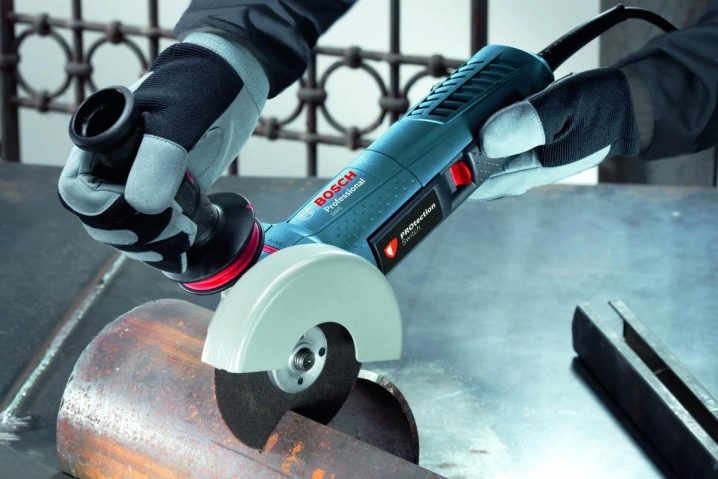
What it is?
The concept of "grinder" is familiar to everyone, but initially this tool was called an angle grinder (abbreviated angle grinder), since it was created specifically for processing internal corners at the junction of planes. The very first products came to the republics of the Soviet Union from friendly Bulgariawhere they were made - it was from there that the popular name "Bulgarian" came from. Of course, you will not find this word on the packaging, it indicates the only correct name of the tool - angle grinder.

It is noteworthy that, in addition to the "grinder", this unit had many more interesting names.
- "Fortune" - one of the very first grinder models that appeared in the USSR. She immediately even fell in love with men due to its exceptional convenience and functionality, and this name gradually migrated to many other angle grinders.


- "Monkey" - in everyday life this definition is used infrequently, it is mostly heard among professionals. Such a funny name appeared thanks to a joke - among professionals who use such a mechanism, there is a legend that from constant work with it, hands begin to lengthen and people become like big monkeys.


- "Turbinka" - another fairly common name associated with the peculiarities of the operation of angle grinders. The fact is that cars make a sound that resembles the sound of aircraft turbines. In previous years, passing by the production workshops where they were working with grinders, one might think that they were preparing aircraft, which is why such an unusual nickname became popular at factories. However, among the people it took root only in certain localities.


- Flexy - in Russia and in the former Soviet republics, such a name for the grinder can rarely be heard, but in the countries of Western Europe it immediately becomes clear what kind of instrument we are talking about. The name arose almost a century ago, when the tool was manufactured exclusively in Germany and one of the most popular models was the MS-6-flexen, which almost immediately got the diminutive name “flexi”. Years later, the model was discontinued, but the definition remained and passed to all other angle grinders.

It is interesting that people in different parts of the country call this tool differently and often do not even immediately understand that in fact each of them is talking about the same thing.
The classic grinder is a hand-held electric tool with an abrasive disc. Its task is to process the joints of metal and other surfaces, although specialists use the tool for solving other tasks, for example, for cutting sheet metal, as well as fittings and pipes.If you replace the worksheet with a sanding disc, you get a high-performance polishing tool instead of a sander. In this type, the grinder is used when bringing flat coatings to a mirror finish and when processing pipes under the railings.
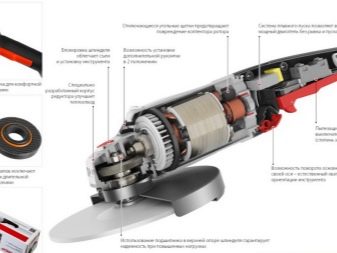

The grinder is widespread in working with ceramic tiles; in this case, a specialized disc for concrete is used. The list of functions that the grinder performs is quite wide, while each type of material processing requires a certain range:
- grinding - for metal surfaces 5–6 mm thick;
- petal - for grinding;
- cutting disc - for work on metal with a thickness of 2 mm;
- circle for ceramics and porous concrete;
- cutting disc for wood;
- chain wheel for wood.
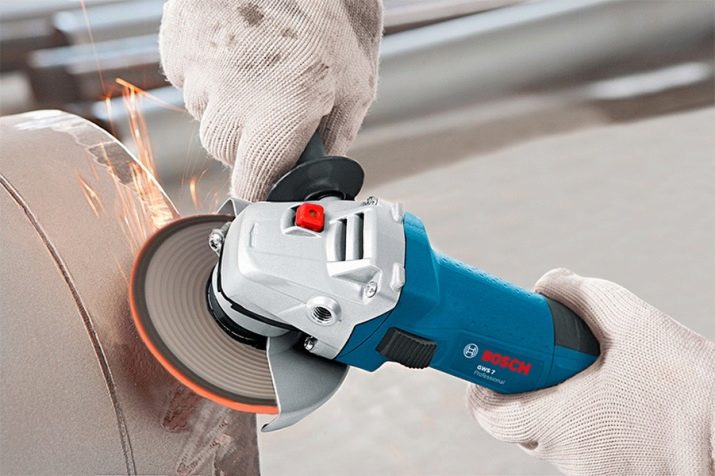



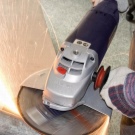

Device
The grinder includes several basic elements. Let's dwell on them in more detail. Tool body. It is made of solid polymer materials with reinforcement. Such compositions are characterized by increased strength, wear resistance and adverse external influences. Outside on the surface there is a power button, supplemented by a power switch. Some models have windows, tightly closed hatches - this is convenient when it becomes necessary to replace the drive brushes.

- Electric motor. The motor is powered by a rechargeable battery or from the AC mains. Usually, special drives are used on angle grinders, which provide increased shaft revolutions. To effectively cool the windings, as well as other elements located in the front axle, a small fan is mounted on it. The motor is often referred to as the heart of the sander. In this case, the voltage obtained from the power supply is fed to the rotor collector through the stator winding using carbon brushes. Sections of such windings are attached to the rotor, the leads from them are placed on the surface of the rotor armature. Budget models, as a rule, rotate at the same speed, but more powerful ones have adjustable rotation.


- Reducer. Single stage device housed in a separate, closed housing. As a rule, it is made of alloys of aluminum or magnesium, including bevel gears, the shafts of which are fixed on ball bearings. The contact of the main parts with each other is made thanks to the housing filled with a special grease.


- Spindle. Consists of a metric shaft and a thick-walled washer and nut that is required to secure the cut-off wheel. In most cases, a button is provided on the gearbox housing, which allows you to keep the shaft in a static position, which is important when dismantling and installing new equipment. In professional models, the device is additionally equipped with a distribution clutch, which stops the movement of the working part of the power tool when the wheel for some reason starts to jam in the material. If there is no clutch, then the disc simply breaks, and its fragments fly in different directions, which can lead to injuries to workers.

- Protective cover. This part covers most of the cut-off wheel and reliably protects the operator from the sheaf of sparks generated during intensive work. The casing is designed to prevent injuries to workers and damage to nearby objects or equipment from fragments of material, which in significant quantities scatter in all directions during processing.
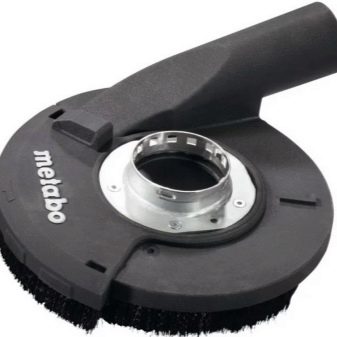

- Lever. This device has a thread that is screwed into the gearbox housing in one of the required positions. This is necessary for the convenience of gripping the tool and holding it securely at the time of work. In the classic version, the grinder has two handles - the main one and the guide, the latter being attached to the gearbox. If you have a one-handed tool, this does not mean at all that you will have to hold the grinder with only one hand - this is not the case.The second hand will be placed on the grinder body.


- One-handed models are usually 115 and 125 mm in diameter. Their main advantage lies in their relatively short length, thanks to which angle grinders can be used in the most inaccessible places, for example, when carrying out car body work. The downside is obvious - such grinders are quite difficult to keep during work. It is for this reason that when choosing a large-diameter unit, it is worth giving preference to products with two handles, since it is much more convenient and, most importantly, safer.

Let us dwell in more detail on the principle of operation of the grinder.
The angle grinder is driven by an electric motor, which is usually turned on by pressing the built-in switch or a special latching button. The unit is powered by an AC mains or from a battery, the latter can be built-in or removable. Most models are equipped with collector motors, while the starter winding in them has a high inductive resistance, which significantly reduces operating currents.

The gearbox shaft spins up and begins to rotate the main gear, which, in turn, drives the driven gear and transfers its force to the spindle. The clutch between the gears can be of two types - either helical or spur. The first option is preferred because it provides exceptional reliability and helps minimize noise levels.

More modern models use a split clutch that fits between the gearbox and the motor. Its main task is to reduce the risk of kickback in the event of a sudden stop of the circle when it is accidentally jammed. This prevents injury to the operator and damage to the main components of the tool.

The choice of a design scheme, where the plane of rotation of the circle or brush runs parallel to the axis of the grinder, is quite easy to explain - when the tool is turned on, a significant torque is generated, and it tends to turn the mechanism to the side. This effort is easily and quickly compensated by the operator operating the grinder due to the optimal position of the hands so that they are perpendicular to the axis.

What is it used for?
With the help of a grinder, they perform a whole range of manipulations for grinding a variety of types of materials:
- non-ferrous and ferrous metals, as well as their alloys;
- natural stone and its artificial imitation;
- ceramic and silicate bricks;
- concrete and cement panels;
- finishing tiles;
- wood.


Keep in mind that you cannot use the angle grinder to cut glass and wood, since the tool develops a fairly high linear speed and, at the same time, significant heating occurs in the touch zone, and often ignition. In the most advanced models, the wheels for wood are equipped with soldering from various refractory materials, due to which the possibility of overheating is minimized. Thus, the grinder has found wide application:
- in the construction industry;
- in the installation of various structures;
- when laying pipelines;
- at metalworking enterprises;
- in car service centers.


In the household, angle grinders are also often used, especially by the owners of private houses and summer cottages. With this tool, surfaces from all of the above materials are cut and polished, welded seams are processed and descaled. Such operations are quite simple, do not take much time and make it possible to do without excessive shock loads at the joint.

Advantages and disadvantages
Grinder models differ greatly from each other, so it is rather difficult to consider some general advantages or disadvantages. In general, the advantages include the ergonomics of angle grinders, the ability to work with a variety of materials, as well as the functions of cutting and grinding surfaces.Among the shortcomings, it should be noted that the tools are highly traumatic - if safety standards are not followed, there is a risk of serious damage, some of which can even lead to death.


If we talk objectively, then the grinders are conditionally divided into household and professional. The first ones have a high working life and, in the overwhelming majority of cases, are suitable for work for half an hour in 10 minute visits with short breaks. Such a tool should be used no more than 2 hours per day. A professional tool is devoid of this drawback - the mechanism ensures uninterrupted operation throughout the day, so the device is indispensable for professional repairmen and builders. Of the minuses, first of all, a rather high cost should be distinguished, as well as a large mass in comparison with household models.

Rating of the best models and their characteristics
The most powerful and reliable electric, battery-powered and gasoline grinders are manufactured in the USA, Japan and Germany. According to analysts, the largest share of sales comes from products of Japanese brands Hitachi and Makita, as well as on angle grinders German firm Bosch... The units of the named brands combine the best price-quality ratio, are distinguished by their practicality, increased efficiency and durability.
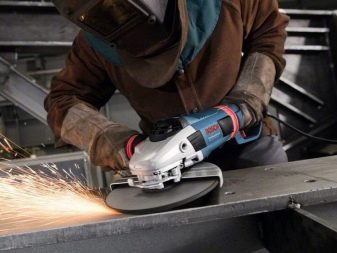

The market leaders also include the American company DeWalt, the Swedish DWT and the Russian Interskol. By the way, it is the domestic tool that is most often bought for the home - these grinders have a rather low cost in comparison with imported counterparts. It should be noted that in recent years, domestic instruments as a whole have significantly improved to the level of European models, therefore, for infrequent use in everyday life, you can safely choose Russian instruments. This will save you a significant amount without any performance risk.


Let's dwell on the most popular angle grinder models.
Hitachi G12SR4
This is a solid, reliable, but at the same time relatively inexpensive model, but the low price is achieved by no means due to the savings on metal - the weight of the tool is 1.8 kg and this is even without a disc. The power is 730 kW - this parameter is enough for intensive work with 115 mm wheels - they can be cut, grinded and cleaned without any overload of the engine.

This model provides for a system of quick replacement of brushes, but this cannot be attributed to disadvantages, since brushes "live" on Hitachi for quite a long time. This is evidenced by the experience of users around the world. But there are claims to dust protection, but allowances should be made for the fact that the tool belongs to household, and not professional, so there is no need to be afraid of constant dusting.
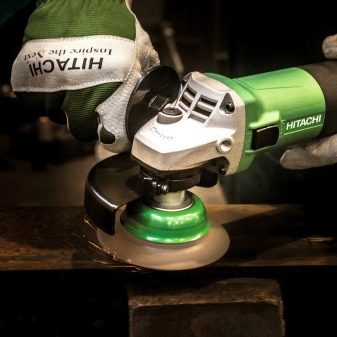

The motor part is very well balanced, so the instrument can be used for a long time while avoiding the so-called vibration sickness. The amount of noise is moderate, the handle can be easily moved from the right side of the gearbox to the left and vice versa. There is no vertical threaded hole. Includes adapter and tripod. Thus, the advantages of the model include:
- high build quality;
- perfect balancing;
- sufficient power characteristics.
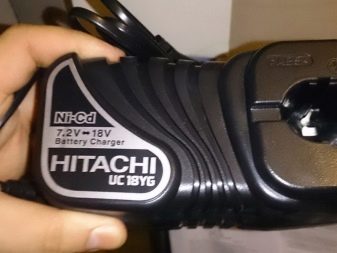

And the minus should be attributed to the "vacuum" ventilation system.
STANLEY STGS7115
This is a LBM of the budget segment, which is distinguished by good efficiency. The 700 W motor is designed for 11 thousand revolutions, making it easy to handle 115 mm wheels when cutting metal. The model is characterized by well-thought-out ergonomics and a large number of ventilation holes to prevent overheating of the mechanism. Of the minuses, a significant level of noise during operation can be noted.


Metabo WEV 10-125 Quick
The model has a high rotational speed, while the movement of the spindle can be adjusted over a wide range. The system is equipped with built-in electronics, which is responsible for the constancy of the speed under variable load, as well as for soft start and overheating prevention. The grinder includes a safety clutch and carbon brushes that turn off the mechanism at the time of power outages. There are almost no disadvantages in such a model, except that the rather high cost


AEG WS 13-125 XE
This is a very powerful, but at the same time quite compact grinder. The power is 1300 W, but the weight does not exceed 2.5 kg, which makes it possible to hold the tool with one hand. The engine uses electronic control mechanisms that provide a smooth start and maintain a constant speed under the influence of a variable load. The very same speed varies from 2800 to 11500, which gives additional advantages in favor of choosing this model.


Of the minuses, the absence of an anti-vibration system can be noted, however, this drawback is almost imperceptible - the motor is so finely balanced.
DeWALT DWE 4215
This model of grinders is distinguished by a well-thought-out cooling system and overload protection. The motor is balanced, reinforced with an anti-vibration handle, which generally facilitates the operation of the device. The noise level of the gearbox is minimal, and the weight of the device is only 2.2 kg, thanks to which the angle grinder can be used even with one hand. This model has a high degree of dust protection, so it can work even in the most difficult factory conditions without the risk of breaking prematurely. But there is also a drawback - the electronic circuit is rather primitive and does not involve adjusting and maintaining the speed at the same level.

Interskol UShM-230 / 2600M
Among all the variety of professional models, this Russian grinder is the cheapest. At the same time, in the opinion of buyers, there is absolutely nothing to complain about in it - the product is distinguished by wide working functionality, reliability of the circuit, increased quality and excellent power characteristics. 2600 Watt power comes with a spindle speed of 6500 rpm, so the configuration can handle the most time-consuming operations without overloading the system.


The product is equipped with a soft start button and an on-off lock. thus, the operation of such a mechanism becomes as comfortable and safe as possible. However, the ergonomics of this device are pretty lame. The fact is that the mass of the unit is 6.8 kg, so it is difficult for even the most physically developed person to hold it in the hands for a long time.

Gadgets
The high popularity of grinders is primarily due to their reliability and exceptional usability. The design of this tool involves a number of additional systems designed to provide increased efficiency and complete operational safety. The breadth of capabilities of each product is determined by the manufacturer at the design stage, while the presence of all sorts of options directly affects the price of the models. That is why we will consider all the main additional devices that can be equipped with these devices.

Reducing starting current
At the moment the motor is turned on, as a rule, a load jump occurs in the engine winding by a factor of 7-9, which often causes its damage, and also provokes a shock moment that passes to the gearbox and spindle through the shaft. A system for effectively limiting the starting current involves the creation of such a mechanism in which the voltage on the winding rises slowly. The use of angle grinders in this case becomes much safer, the resources for using the electric motor increase, and effective protection of the gearbox is also provided.

Maintaining the set revolutions of the circle
When the cutting wheel comes into contact with the work surface, friction is created, which significantly increases the load on the motor and reduces the rotation speed. The system of maintaining a given number of revolutions of the circle is to some extent compensated by resistance and determines the maintenance of the cutting speed. The rotation speed stabilization is formed through the use of a constant microcircuit.
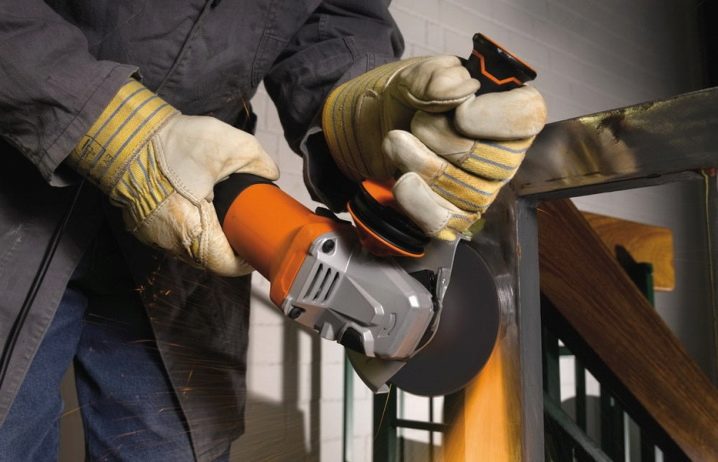
Two main methods have been developed for maintaining the required number of revolutions in the angle grinder at the time of its operation under load - by current or by the frequency of the spindle movement. In the first version, an AC consumption sensor is attached - it sets all the necessary parameters, and as the current supply increases, the circuit gradually increases the voltage on the windings.
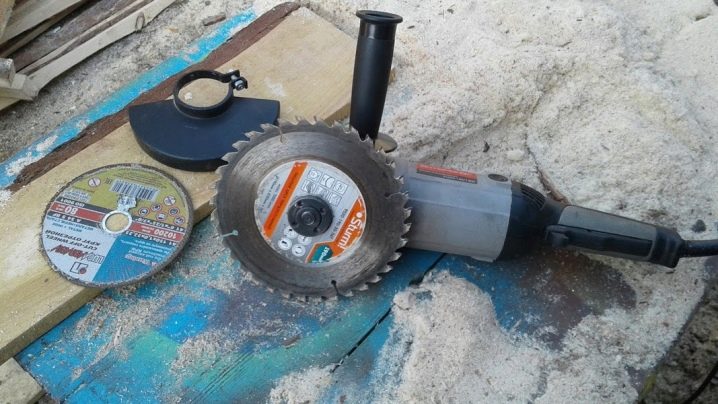
Frequency control assumes the use of a thermometric sensor - it controls the speed of the grinder, and at the moment of a decrease in this indicator, the circuit begins to intensively increase the voltage, which, as a result, leads to the establishment of the optimum speed of rotation of the tooling. The selection of a suitable option for keeping the rotational speed in a constant position takes place at the stage of creating the device. This is done taking into account all the pros and cons of each method. The presence of such a system is preferable, but not all models are equipped with it.

Restart lock
During repair and adjustment work, situations periodically arise in which, for one reason or another, an unexpected power outage occurs. If power is restored, the machine may restart, often resulting in operator injury. To prevent this from happening, in the most modern models, the reclosing blocking mechanism is strengthened. In such cases, a new start of the tool is possible only by holding down the start button of the angle grinder again, and this is feasible only when the user takes the angle grinder into his own hands. That is, such actions mean that all subsequent human operations will certainly be thought out.

Automatic wheel balancing
During the operation of angle grinders, the wear of brushes and disks is uneven, this often leads to a significant imbalance, which causes strong vibration - as a result, the accuracy of the operations performed can be greatly questioned. To remedy the situation, the most progressive technical solutions are used, in particular, special bearing designs with a minimum number of balls. It should be noted that such an additional device significantly increases the cost of the model, therefore it is used mainly for professional products.

Overload protection
During the operation of the grinder, the load on the drive at times begins to exceed the standard. In order to completely eliminate the likelihood of such overloads and the resulting malfunctions, angle grinders are equipped with additional systems that turn off the current supply forcibly. In this case, the mechanism simply stops working and to restart it, you must first turn off the device, and then turn it on again.

To establish protection against overheating, two methods are used - by current and by temperature. In the first case, the electronic module detects overheating, and in the second, a special thermal sensor is attached, interrupting the power supply chain at the moment the indicators go beyond the regulatory framework.
Dust protection
When grinding surfaces or cutting hard materials using a grinder, a large amount of dust is often formed, which, with a stream of air masses, penetrates into the body and causes premature wear of parts. Bearings, as well as the outer surfaces of the rotor and the brush assembly, are particularly affected by dust. Metal particles can even wear out the winding. The protection of the grinder involves the introduction of new design solutions:
- installation of nets on ventilation openings or the use of special filtering devices;
- protection of stator windings and installation of cord bands;
- installation of closed bearings;
- maintaining the tightness of the gearbox housing;
- filling the winding with durable epoxy compounds.


It should be noted that the effect of their use makes the work safer, and dust protection as a whole significantly increases the working life of the angle grinder.
Kickback protection
At the time of the working body jamming, sometimes a torque arises, which is directed to the turn of the grinder. In this case, you have to apply significant efforts to firmly hold the tool in your hands. Often, such a violation in the work of the grinder leads to injuries. The kickback prevention system is implemented in one of two options: using electrical circuits or mechanically. In the first case, a system of constant monitoring of current parameters is installed, and in the second, various couplings are attached, which are triggered when the resistance value of the rotating shaft increases. In either case, the power to the instrument is cut off.


Adjusting the guard
This option can be adjusted in different ways by individual manufacturers, regardless of the specific scheme. But there are general principles according to which the replacement of the protective casing is carried out without the use of a key and at the same time rather quickly. It is very convenient. When, for example, you have to operate the grinder in an intensive mode and the position of the casing has to be constantly changed - in such a situation, it is enough just to gently bend the lever and move the casing to the required position. If older models are used that require a key, adjustment is more difficult and technical, not to mention that it takes much longer.

Travel speed control
The spindle frequency is adjusted using a wheel located on the solid body of the grinder. On the cheapest models, such an option is often absent, however, as evidenced by user reviews, when performing most types of work, its presence is extremely important. For example, when sanding plastic, if the rotation is too intense, the surfaces to be treated may simply burn.

Vibration damping
With prolonged use of angle grinders, sometimes strong vibration occurs. In order to protect the operator from its harmful effects, a special vibration-damping handle is used, although not all models are equipped with such a device - usually only the most expensive household options or professional tools. Many people believe that this part is not particularly important, but experts recommend paying special attention to it, since the device's operation with it becomes soft and smooth. LBM is used in work with a wide variety of devices. The market for grinding machine accessories is large and able to satisfy both the experienced craftsman and any home craftsman.

However, there is one important point to keep in mind. LBMs for 125 and 230 mm are more in demand, equipment for these models is sold in any large construction supermarket. But it is much more difficult to choose the necessary accessories for a 150 or 180 mm mechanism, since these models are implemented quite rarely.
Absolutely all manufactured tooling is used for processing only certain types of materials and is not allowed to be used for any others. Moreover, the choice of equipment should be made taking into account the parameters of the machine itself. For example, it is forbidden to use a rig, the diameter of which is higher than the maximum possible size of circles for each specific variation of angle grinder.

The tooling includes cut-off wheels. They are essential for cutting a wide variety of materials. When working with them, it is necessary to maintain the angle between the surface of the material and the tool itself as accurately as possible.In addition, you must always remember that all cutting wheels are suitable only for securely fixed elements. They are subdivided into diamond as well as abrasive.

Abrasives are needed for cutting sheet metal, concrete and natural stone. The marking of such circles is indicated by letters of the Latin alphabet and numbers.
- The letters indicate the type of material from which the circle is made: A - means electrocorundum, C - silicon carbide, AC - diamond.
- In numbers, it directly indicates the grain fraction, and, accordingly, the specialization of the circle. So, for steel, this parameter will be higher, and for non-ferrous metals - slightly lower.
- The last letter designation indicates the strength of the bond, the closer it is to the very end of the alphabet, the greater the calculated parameter.

If discs are selected without taking these parameters into account, they can grind off too quickly.
Diamond discs have a rather narrow specialization and are needed to work with strictly defined types of materials:
- "Concrete" is required for concrete products;
- "Asphalt" - for materials with a high proportion of abrasives;
- "Building material" - for working with ceramic and silicate materials;
- "Granite" - for various superhard surfaces.
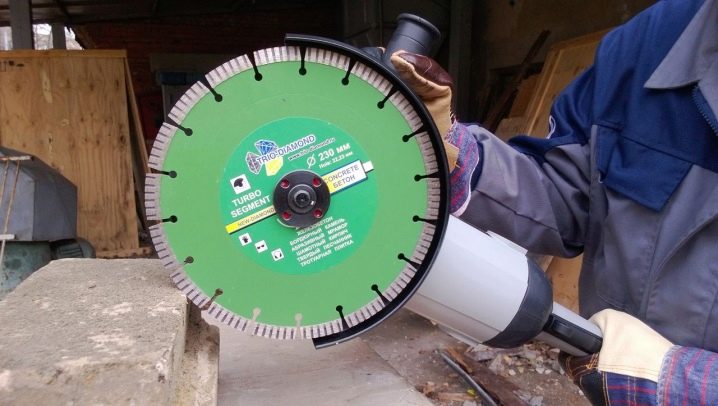
Selection Tips
Considering the huge difference in technical and operational parameters for different models of angle grinders, the question of how to choose the right tool, especially for non-professionals, can be quite difficult. Experts recommend that when buying a grinder for a house, a summer residence or a garage, focus on the following parameters.
- Rotational speed. The speed of rotation of the disk directly depends on its size. The optimal value is taken within 80 m / s. If the rotation frequency is much higher, this causes destruction of the disc, and deviations in the direction of decreasing lead to its rapid wear.
- Power. The nominal allowable power for angle grinders varies from 650 to 2700 W and also depends on the size of the disc diameter, therefore more powerful machines have much larger discs. In this case, the motor creates a force on the sharp cutting edge, which is quite enough for the necessary effect on the work surface. By the way, brushless models have more power.
- Tool diameter. Be sure to decide in advance what size you need for your rig, since it is strictly forbidden to use circles larger than the allowable size. Of course, technically, this can be done by removing the protective casing, but such manipulations lead to injury to a person.

Another point is that the size of the tooling is directly related to the parameters of the cutting depth, which is extremely important in the case when you plan to cut large materials, for example, curb stones. With a wheel diameter of 125 mm, the cutting depth is only 30–40 mm. This is due to the fact that the dimensions of the gearbox prevent the disc from being completely immersed in the material being processed. Of course, it is possible to make cuts on both sides, but it is quite problematic to “crank” such a division into parts with a really high quality, and it takes a lot of time. Therefore, it is better for you to pay attention to products with large discs - from 250 mm.

It is important to decide in advance which model you need - professional or household. It all depends on the degree of intensity of use. Household devices can only be used up to 2 hours (intermittently) per day, while a professional device is suitable for use throughout the entire working day. In addition, the professional tool is reinforced with special protection against dust, noise and vibration.

How to use?
When using angle grinders, all instructions and safety standards must be strictly observed. Do not forget that the speed of the disc's movement varies from 6600 to 13300 revolutions, so when the circle is destroyed, its fragments scatter in different directions with tremendous speed and force.That is why the basic rule of safe work is not to remove the protective cover and use special glasses to prevent debris from getting into the eyes. It is also advisable to wear protective gloves and always shields for the soft tissues of the face and neck.

It is forbidden for people to stay in the plane of rotation of the grinder's circles; you cannot touch the moving parts of the elements with your hands during operation. If it becomes necessary to correct the workpiece, first turn off the angle grinder, make all the necessary corrections, and only then turn it on again. To work with different materials, strictly specialized equipment should be used. The mains drive must be positioned in such a way as to minimize the risk of damage.
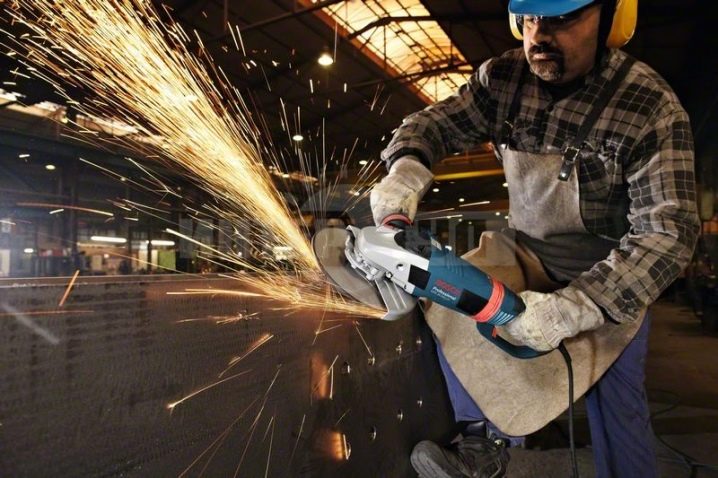
Some masters prefer to assemble 12 volt grinders on their own, but if we are talking about more essential parameters up to 220 volts, then in this case no handicraft devices are acceptable.
For information on how to troubleshoot the main malfunctions of the grinder, see the next video.













The comment was sent successfully.